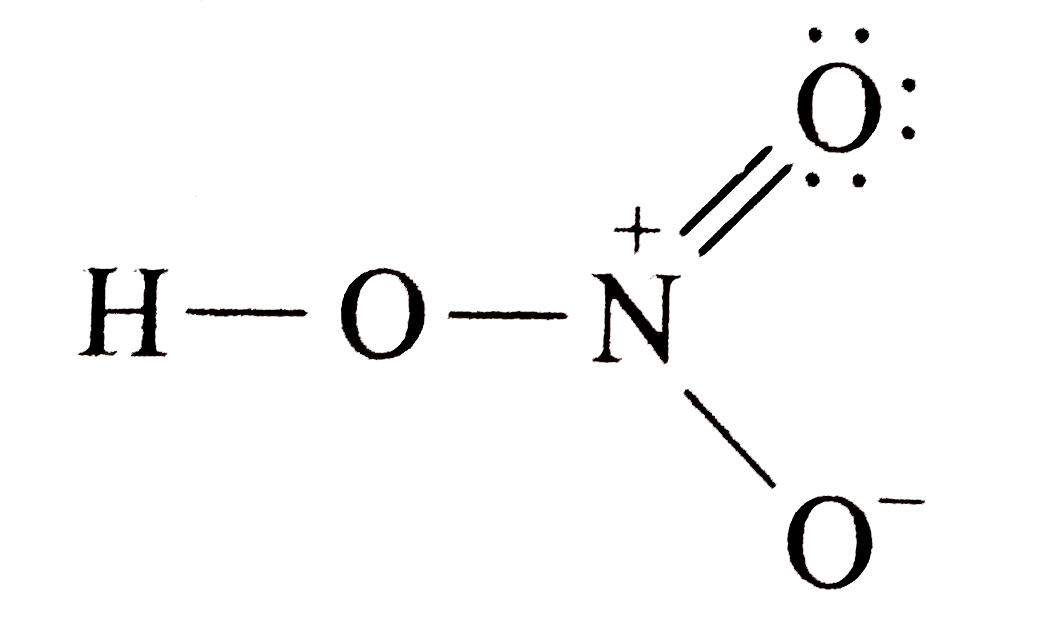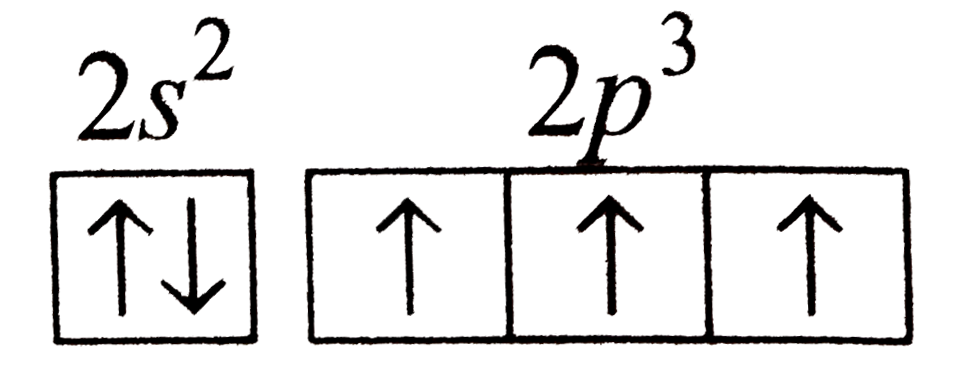The nitrogen atom shows a maximum covalency of
A
six
B
five
C
four
D
three
Video Solution
Text Solution
The correct Answer is:C
Usually, the number of bonds formed by an atom (of representative element like N) that is bonded to less electronegative atoms (like H) will be equal to 8 minus its group number (old nomenclature) in the periodic table. Thus, N usually forms 8−5=3 covalent bonds.
The number of bonds is often the same as the number of unpaired valence electrons of each atom that are available for bonding. For example, the ground state electron configuration of nitrogen, which usually forms three bonds, is
[He]2s22p1x2p1y2p1z
Nonmetals can form compounds in which they do not have the expected number of bonds. Nitric acid, NHO3, is such a compound. In the Lewis structure of HNO3, the N atoms has four bonds:

The N atom has five valence electrons

Three of the unpaired electrons are used to form three normal covalent bonds while the fourth bond is formed by N through its 2s2 electron pair. Thus, the fourth bond is always a dative bond.
|
Updated on:21/07/2023
Topper's Solved these Questions
- BOOK - R SHARMACHAPTER - CHEMICAL BONDINGEXERCISE - Follow-up Test 57videos
CHEMICAL BONDING
- BOOK - R SHARMACHAPTER - CHEMICAL BONDINGEXERCISE - Follow-up Test 67videos
CHEMICAL BONDING
- BOOK - R SHARMACHAPTER - CHEMICAL BONDINGEXERCISE - Follow-up Test 38videos
CHEMICAL BONDING
- BOOK - R SHARMACHAPTER - AROMATIC HYDROCARBONSEXERCISE - Archives59videos
AROMATIC HYDROCARBONS
- BOOK - R SHARMACHAPTER - CLASSIFICATION OF ELEMENTS AND PERIODICITY IN ELEMENTSEXERCISE - ARCHIVES37videos
CLASSIFICATION OF ELEMENTS AND PERIODICITY IN ELEMENTS
Similar Questions
Knowledge Check
- Question 1 - Select One
All elements except carbon have tendency to show maximum covalency of six
ADue to absence of vacant d-orbitalsBDue to presence of vacant d-orbitalsCDue to presence of partially filled d-orbitals.DDue to presence of completely filled d-orbitals. - Question 2 - Select One
The maximum covalency of nitrogen is
A6B5C4D3 - Question 3 - Select One
The carbon atom has a covalency of :
A2B4C6D1

